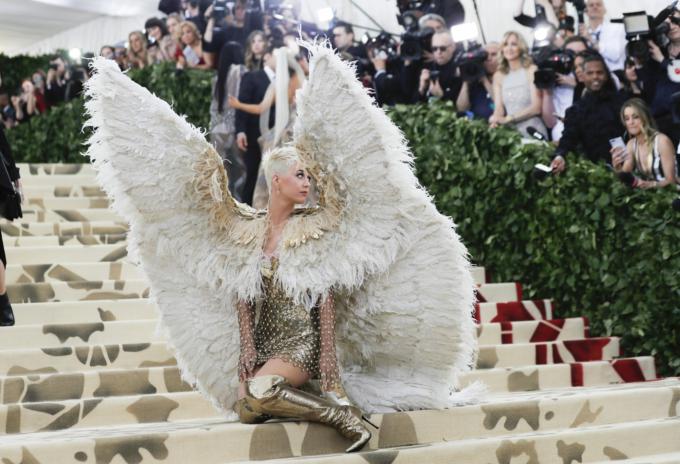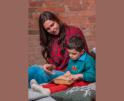
Culture
New York City, N.Y., May 9, 2018 CNA.- By now, you have likely heard that the theme of this year’s Metropolitan Museum of Art Gala was “Heavenly Bodies: Fashion and the Catholic Imagination.” I will admit: when I first heard this, I winced. I’m not really sure what I was imagining, but it certainly wasn’t what paraded down the red carpet on Monday night.
To my surprise, I wasn’t offended by the vast majority of the dresses—instead, I felt a little sad that contemporary fashion designers seem to appreciate the “Catholic imagination” more than some of today’s church architects.
The Catholic Church could benefit from taking a fresh look at some of the “imagination” that was on display on Monday. No, I am not talking about Rihanna’s dress, or Lana Del Rey’s—but perhaps something like what Blake Lively, Darren Criss, or Priyanka Chopra wore. By focusing only on the people who went over the top, we do ourselves a disservice—we ignore the interest and wonder fostered by pieces of art inspired by the beauty of our faith.
I grew up a parishioner in a church that was built in 1988, during the so-called “dark ages” of Catholic design. The church is nearly indistinguishable on the outside from the Congregationalist church across the street. Aside from the sign out front, there’s nothing about the building that screams “Catholic,” or even “I am different from that other church over there.”
The inside is not much better. It’s very plain. The walls are white. There are no frescoes. The only real color in the building comes from the carpet, which is a nice reddish color. There are banners behind the altar that are rotated with the liturgical seasons, but that’s about it. Even the stained glass is just colored panes, with no designs.
The tabernacle, which is a handsome, yet unadorned, wooden box, is hidden in the corner, behind where the altar servers sit. The priest’s chair is placed behind the altar.
In short: there is very little at this parish that would evoke the gasps, or the feelings of wonder and amazement that some of Monday night’s fashions drew. And that should make us sad. There is a human longing for beautiful things and traditions, and if these aren’t found in the Church, people will seek them elsewhere.
The Church has a wonderful history of art and beautiful designs, yet that seems to have fallen mostly by the wayside over the past few decades. Felt banners do not have the same effect on a person as a beautiful painting, intricate stained glass, or a sparkling mosaic. The rock n’ roll Masses of my youth, with drums and guitars, fail to create the same reverent, mystical, and contemplative atmosphere as chanting and polyphony.
An outfit based off my hometown parish would resemble something found in an H&M, not a one-of-a-kind couture look. Catholicism, with its pageantry, pomp, and bedazzled Eastern Rite bishops, is the haute couture of religion. This might be something the Church shies away from these days, but it was embraced by the revelers at the Met Gala.
Catholicism is one of few faiths that could inspire something like what we saw on Monday. Indeed, the Gala organizers had originally had planned for five major faiths—Catholicism, Judaism, Islam, Hinduism, and Buddhism—to be the theme of this year’s gala, but dropped the other four during the planning stages when they realized there’s just too much good Catholic art and fashion.
There’s been a lot of hemming and hawing online, questioning what the public’s reaction would be if the event were used Islam or a different faith for its theme. Given that the internet recently had a nervous breakdown over a white Utah high schooler’s vintage Chinese prom dress, this is definitely something worth considering. It is important to be respectful of culture, and sadly, not everyone at the Gala was.
However, I propose a different thought exercise: Imagine if the Met Gala had been themed to feature Methodist, Baptist or Puritan fashion, art, and architecture. It would certainly have been a very different event. There’s just far less source material. Catholics should be proud of the beauty and imagery that the faith has inspired, and indeed, many are proud.
Take the story of Stefano Gabbana, a Catholic designer who has experienced a Catholic reversion of sorts in recent years. He says he no longer wishes to be identified as gay, and has lost friends in the LGBT community because of comments opposing same-sex parenthood, IVF, surrogacy, and nontraditional families. Gabbana has frequently used his faith as inspiration when designing his clothing, and he designed several of the more jaw-dropping pieces worn on Monday, including Sarah Jessica Parker’s nativity-inspired getup, Coco Brandolini d’Adda’s Our Lady of Guadalupe dress, and Criss’s blazer.
Gabbana, at least, and probably other designers, didn’t use Marian imagery or ancient mosaics in their pieces to mock them. They were inspired by them, and used those images, for the most part, to create beautiful clothing. Imitation, within limits, is the sincerest form of flattery. There’s a reason why Ariana Grande, a lapsed Catholic herself, wore a dress with images of the ceiling of the Sistine Chapel and not one depicting the ceiling of a Houston megachurch. Catholicism is different, but not in a bad way.
The Catholic imagination should be embraced and fully displayed. It is worth saving. It is worth promoting. And on Monday, a largely secular audience got to see it for themselves.
The opinions expressed in this commentary are those of the author. They do not reflect the editorial position of Catholic News Agency.
Recent articles in the Culture & Events section
-
Boston and the nation respond to the San Francisco Earthquake of 1906Thomas Lester
-
See you in the storyLaura Kelly Fanucci
-
'Dignitas' and the mediaRussell Shaw
-
Scripture Reflection for April 14, 2024, Third Sunday of EasterDeacon Greg Kandra
-
St. Helena's House is established in the South EndThomas Lester


















